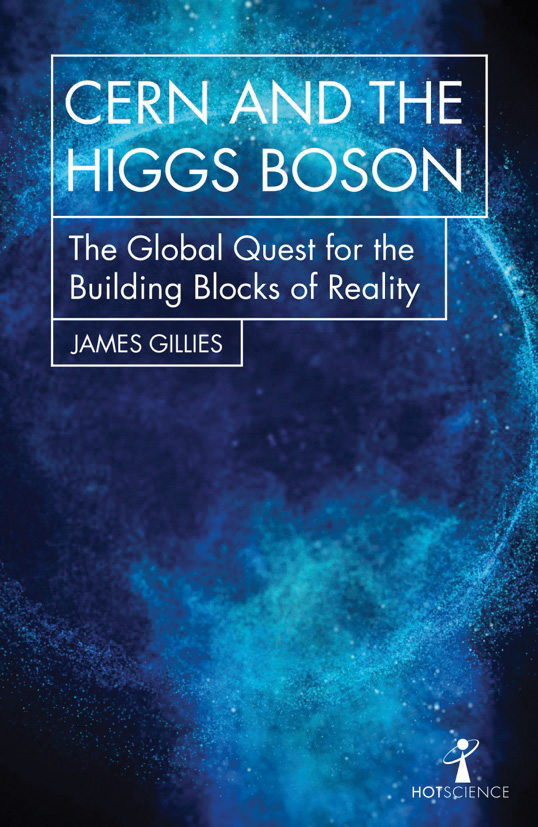CERN and the Higgs Boson: The Global Quest for the Building Blocks of Reality, by James Gillies, Icon Books

James Gillies’ slim volume CERN and the Higgs Boson conveys the sheer excitement of the hunt for the eponymous particle. It is a hunt that had its origins at the beginning of the last century, with the discovery of the electron, quantum mechanics and relativity, and which was only completed in the first decades of the next. It is also a hunt throughout which CERN’s science, technology and culture grew in importance. Gillies has produced a lively and enthusiastic text that explores the historical, theoretical, experimental, technical and political aspects of the search for the Higgs boson without going into oppressive scientific detail. It is rare that one comes across a monograph as good as this.
Gillies draws attention to the many interplays and dialectics that led to our present understanding of the Higgs boson. First of all, he brings to light the scientific issues associated with the basic constituents of matter, and the forces and interactions that give rise to the Standard Model. Secondly, he highlights the symbiotic relationship between theoretical and experimental research, each leading the other in turn, and taking the subject forward. Finally, he shows the inter-development of the accelerators, detectors and experimental methods to which massive computing power had eventually to be added. This is all coloured by a liberal sprinkling of anecdotes about the people that made it all possible.
Complementing this is the story of CERN, both as a laboratory and as an institution, traced over the past 60 years or so, through to its current pre-eminent standing. Throughout the book the reader learns just how important the people involved really are to the enterprise: their sheer pleasure, their commitment through the inevitable ups and downs, and their ability to collaborate and compete in the best of ways.
A ripping yarn, then, which it might seem churlish to criticise. But then again, that is the job of a reviewer. There is, perhaps, an excessively glossy presentation of progress, and the exposition continues forward apace without conveying the many downs of cutting-edge research: the technical difficulties and the many immensely hard and difficult decisions that have to be made during such enormous endeavours. Doing science is great fun but also very difficult – but then what are challenges for?
There is, perhaps, an excessively glossy presentation of progress
A pertinent example in the Higgs-boson story not emphasised in the book occurred in 2000. The Large Electron Positron collider (LEP) was due to be closed down to make way for the LHC, but late in the year LEP’s ALEPH detector recorded evidence suggesting a Higgs boson might be being observed at a mass of 114–115 GeV – although, unfortunately, not seen by the other experiments (see p32). Exactly this situation had been envisaged when not one but four LEP experiments were approved in the 1980s. After considerable discussion LEP’s closure went ahead, much to the unhappiness and anger of a large group of scientists who believed they were on the verge of a great discovery. This made for a very difficult environment at CERN for a considerable time thereafter. We now know the Higgs was found at the LHC with a mass of 125 GeV, vindicating the original decision of 2000.
A few more pictures might help the text and fix the various contributors in readers’ minds, though clearly the book, part of a series of short volumes by Icon Books called Hot Science, is formatted for brevity. I also found the positioning of the important material on applications such as positron emission tomography and the world wide web to be unfortunate, situated as it is in the final chapter, entitled “What’s the use?” Perhaps instead the book could have ended on a more upbeat note by returning to the excitement of the science and technology, and the enthusiasm of the people who were inspired to make the discovery happen.
CERN and the Higgs Boson is a jolly good read and recommended to everyone. Whilst far from the first book on the Higgs boson, Gillies’ offering distinguishes itself with its concise history and the insider perspective available to him as CERN’s head of communications from 2003 to 2015: the denouement of the hunt for the Higgs.







